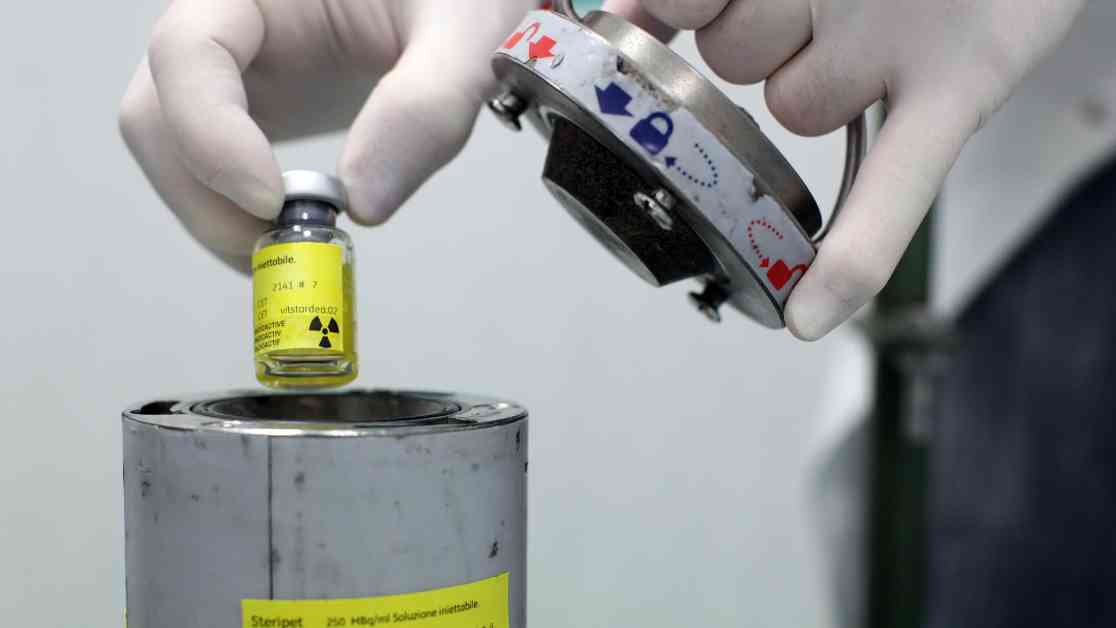Targeted Radiation Therapy: Revolutionizing Cancer Treatment
In the ever-evolving landscape of cancer treatment, targeted radiation therapy has emerged as a promising frontier in the fight against this deadly disease. Pharmaceutical giants like Bristol Myers Squibb, AstraZeneca, and Eli Lilly have invested billions of dollars in acquiring radiopharmaceutical companies, signaling a shift towards a future where delivering radiation directly to tumors could be a game-changer.
The concept behind targeted radiation therapy is simple yet revolutionary. By attaching radioactive material to a targeting molecule that seeks out specific markers on cancer cells, these drugs have the potential to deliver precise doses of radiation to tumors while sparing healthy tissue. This targeted approach could significantly reduce the side effects commonly associated with traditional cancer treatments.
The technological advancements in radiopharmaceuticals have already yielded promising results. Novartis, a pioneer in the field, has successfully developed two radiopharmaceutical drugs – Lutathera for a rare type of cancer in the pancreas and gastrointestinal tract, and Pluvicto for prostate cancer. These drugs have shown significant efficacy and are projected to generate billions in sales by 2027.
The success of Novartis has sparked a wave of interest among other pharmaceutical companies, leading to a flurry of acquisitions and partnerships in the radiopharmaceutical space. Eli Lilly, for instance, acquired radiopharmaceutical maker Point Biopharma for $1.4 billion, while Bristol Myers Squibb invested $4.1 billion in RayzeBio. These strategic moves underscore the growing importance of radiopharmaceuticals in the future of cancer treatment.
Manufacturing and logistics pose significant challenges in the production of radiopharmaceuticals. The radioactive material used in these drugs degrades rapidly, requiring patients to be treated within days of production. Companies like Novartis have invested heavily in building manufacturing sites to ensure a steady supply of radiopharmaceuticals and timely delivery to patients.
The complexity of radiopharmaceuticals is not limited to manufacturing but also extends to administration. Healthcare facilities need to obtain special licenses to handle radioactive material, and certified specialists are required to administer the drugs intravenously. Patients like Ronald Coy, who has been battling prostate cancer for nearly a decade, must adhere to strict protocols to minimize radiation exposure to themselves and others.
Despite the challenges, the potential of radiopharmaceuticals in cancer treatment is immense. The ability to target specific markers across a wide range of tumors, including breast, lung, and pancreatic cancers, holds promise for a more personalized approach to cancer therapy. The combination of radiopharmaceuticals with existing treatments like immunotherapy could further enhance their efficacy and expand their scope of application.
As the field of radiopharmaceuticals continues to evolve, the true extent of its impact on cancer care remains to be seen. Executives and analysts alike acknowledge that more research is needed to determine the safety and effectiveness of these drugs in treating various types of cancer. However, the growing interest and investment in radiopharmaceuticals suggest that they could play a significant role in shaping the future of cancer treatment.
In conclusion, targeted radiation therapy represents a paradigm shift in the way we approach cancer treatment. With advancements in technology and a growing body of research supporting their efficacy, radiopharmaceuticals have the potential to revolutionize the way we treat cancer. As pharmaceutical companies continue to invest in this promising field, the future of cancer therapy looks brighter than ever before.






















